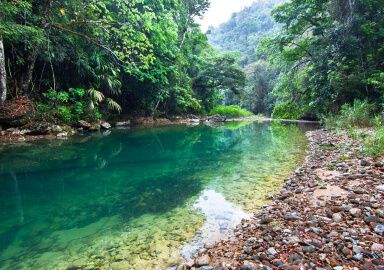Permit
Permit are a medium to large sized gamefish of the warmer coastal waters of the eastern shores of the Americas.
View 22 listings
22
listings
–
price starting from
7
countries
–
to the nearest trip
Where and When?
Permit are a fish of the sub-tropical shallower coastal waters of the eastern seaboard of the Americas. They can be found from Massachusetts to Brazil but are most common around Florida, the Gulf of Mexico and the Caribbean Sea. They are a species of shallow coastal waters and bays and are rarely found in water deeper than about 35 meters (114ft.), especially in summer. On the northern edge of the permit’s range on eastern seaboard of the USA, such as parts of Massachusetts, permit fishing may be productive in mid-summer, not so much in winter. In the more central areas of their distribution they may be caught throughout the year, but they are generally less active and aggressive in feeding during cooler water periods. In winter fishing is often better around mid-day, while in summer early mornings and evenings may bring the best results. They have fairly large eyes and are mostly “optic” feeders and so daylight fishing is usually the best.
About Permit
Permit (Trachinotus falcatus) are laterally compressed, disc-shaped fish of a highly reflective silver-grey colour with an orange patch just in front of the anal fin. They are often very difficult to see, and so got a well-earned nickname “ghost fish”; the best way to keep track of permits is to follow their shadows on a sandy bottom. They have small mouths on the front of the head and many small but sharp teeth that can easily crush a crab, as well as any unwary angler’s fingers. The permit have large, backward pointing fins and the forward dorsal fin has 6-7 sharp spines. The maximum recorded length is 122 centimetres (48 in.) with a mass of 36 kilograms (80lbs.) but most fish are much smaller, around 90 centimetres (35 in.).
The species grows rapidly in the first few years of their lives and then slows down as they get older with the oldest recorded permit being 23 years old. There is a general inshore, cooler water (northwards in USA) movement in the summer months followed by the opposite in fall as the fish move offshore to spawn. Permit feed mostly on crabs, other crustaceans and invertebrates as well as some small fish.
How to Catch?
There are many exciting ways to catch permits as they are fast moving, clear water aggressive feeders. They can be caught from the shore or any kind of small craft, kayaks and pole boats being very useful and popular. Tackle-wise, it is easiest to use light or medium spinning equipment, depending on the size of fish being targeted, but fly fishing is also popular, fun and productive. The most common baits are crabs and various artificial imitations of them that can be cast or dropped close to where fish are thought to be. They can be found either singly or in shoals but the behaviour of lone fish is very different from that in shoals.
Single permits are super alert and suspicious and will rapidly swim off at the first sign of potential disturbance. As they are usually in clear water this means that wading should be minimised and, if possible, rather make a long cast to where you suspect the fish may be. This is why kayaks and similar vessels are popular as they are quiet and can glide fairly close to permit. Shoaling permits, on the other hand, are more aggressive in feeding and have even been reported to “attack” fishers or bathers. Both shoaling permit and single fish may be spotted by looking out for their dorsal fins gliding along in calm water. Permits are wily opponents but very worth the effort and an excellent target for everyone from beginner to expert.








